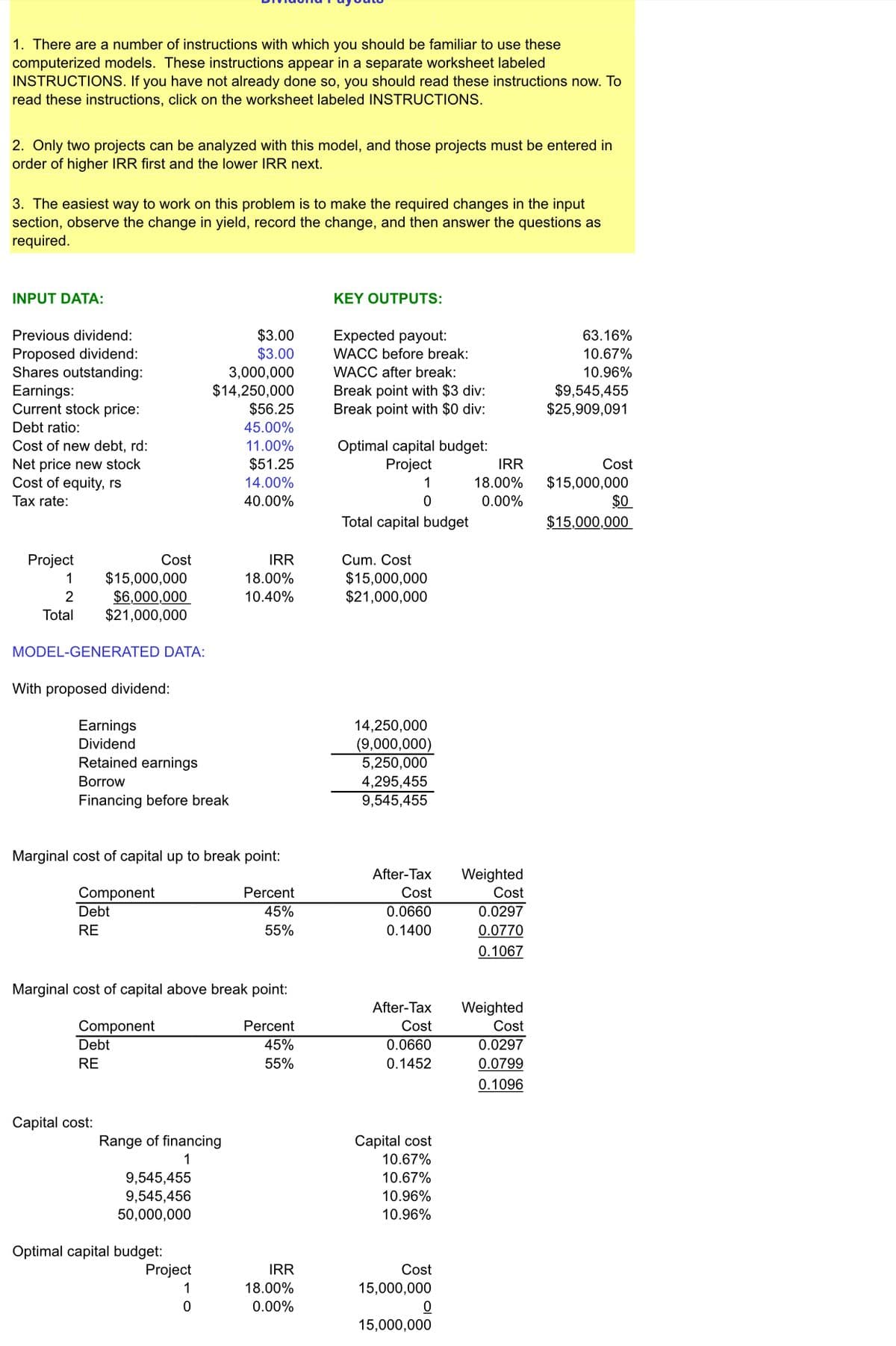Identify Ybor's expected payout ratio, the weighted average cost of capital (WACC) before the break, and the WACC percentage after the break. How large should Ybor's capital budget be for the year? Which project(s) can be accepted? (Refer to the Optimal Capital Budget under Key Outputs.) Assume that Ybor's management is considering a change in the firm's capital structure to include more debt. Management would therefore like to analyze the effects of an increase in the debt ratio to 60%. The treasurer believes that such a move would cause lenders to increase the required rate of return on new bonds (rd) to 12% and that cost of equity (rs)would rise to 14.5%. Explain how this change affects the optimal capital budget. Which project(s) can be accepted? (Refer to the Optimal Capital Budget under Key Outputs.)
Percentages need to be entered in decimal format, for instance 3% would be entered as .03.
Ybor City Tobacco Company has for many years enjoyed a moderate, but stable growth in sales and earnings. In recent times, however, cigar consumption and consequently Ybor's sales have been falling, primarily because of the public's greater awareness of the health dangers associated with smoking. Anticipating further declines in tobacco sales in the future, Ybor's management hopes eventually to move almost entirely out of the tobacco business and into a newly developed, diversified product line in growth-oriented industries. The company is especially interested in the prospects of pollution-control devices, because its research department has already done much work on the problems of filtering smoke. Right now, the company estimates that an investment of $15 million will be necessary to purchase new facilities and to begin production of these products, but the investment could earn a return of about 18% within a short time. The only other available investment
The company is expected to pay a $3.00 dividend on its three million outstanding shares, the same as its dividend last year. The directors could be persuaded to change the dividend if there are good reasons for doing so. Total earning after taxes for the year are expected to be $14.25 million; the common stock is currently selling for $56.25 per share; the firm's target debt/assets ratio is 45%; and its marginal tax rate is 40%. The costs of various forms of financing are as follows: (This information is shown on the spreadsheet provided.)
- New bonds, rd = 11% (the before-tax rate)
- New common stock sold at $56.25 per share will net $51.25
- Required
rate of return onretained earnings (cost of equity ), rs =14%
- Identify Ybor's expected payout ratio, the weighted average cost of capital (WACC) before the break, and the WACC percentage after the break.
- How large should Ybor's capital budget be for the year? Which project(s) can be accepted? (Refer to the Optimal Capital Budget under Key Outputs.)
- Assume that Ybor's management is considering a change in the firm's capital structure to include more debt. Management would therefore like to analyze the effects of an increase in the debt ratio to 60%. The treasurer believes that such a move would cause lenders to increase the required rate of return on new bonds (rd) to 12% and that cost of equity (rs)would rise to 14.5%. Explain how this change affects the optimal capital budget. Which project(s) can be accepted? (Refer to the Optimal Capital Budget under Key Outputs.)
- Considering the information presented in Question 3, if rs rose to 16%, would the low-return project be acceptable? (Refer to the Optimal Capital Budget under Key Outputs.)
- Considering the information presented in Question 4, would the project selection be affected if the proposed dividend was eliminated ($0)? (Refer to the Optimal Capital Budget under Key Outputs.)

Trending now
This is a popular solution!
Step by step
Solved in 2 steps


